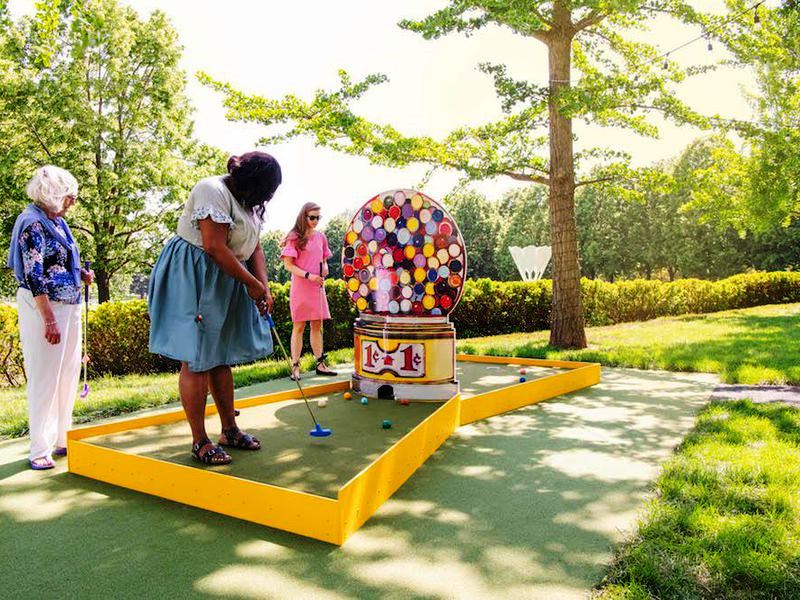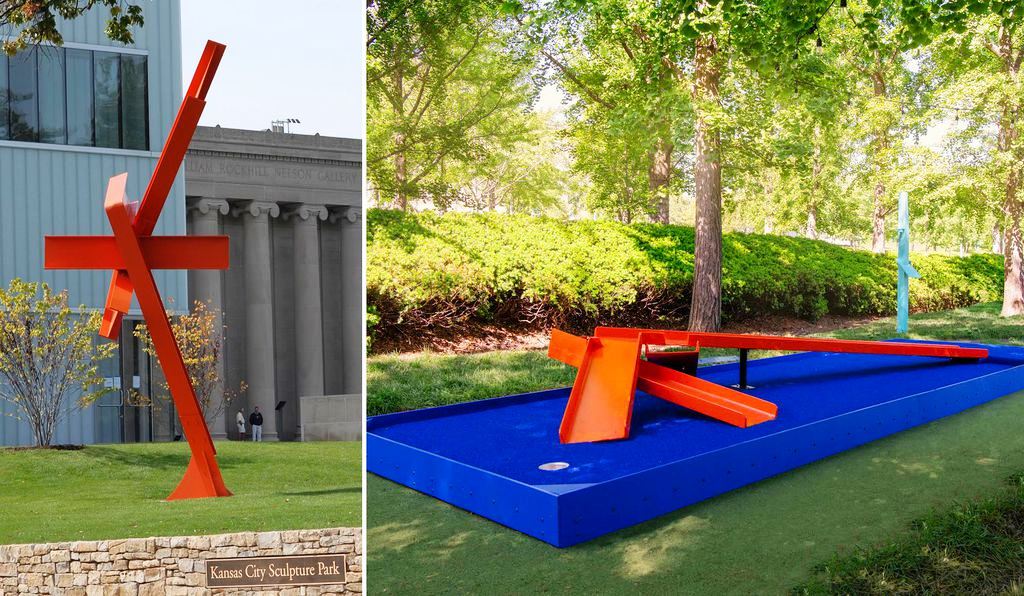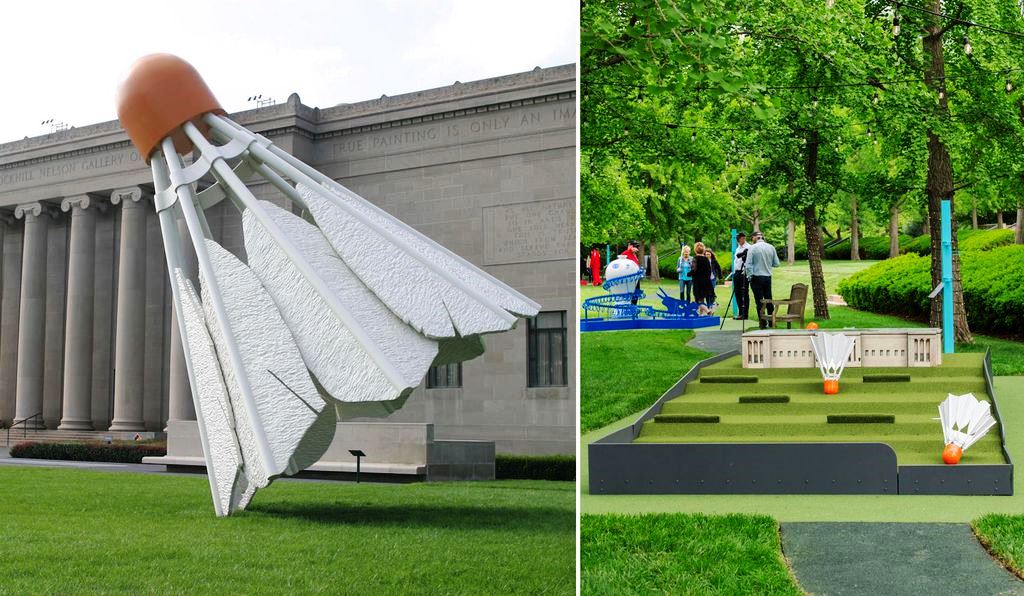The Nelson-Atkins Museum of Art takes inspiration from its vast collection to create an art-inspired mini golf course

It could be said that the art of miniature golf design reached its pinnacle when some crafty individual decided to plop a windmill on a course, challenging players to sink a hole-in-one past its rotating blades. Over time windmills have become synonymous with the miniaturized sport, so leave it to a museum to shake up mini golf course design for the first time in years (insert golf clap here).
Taking inspiration from its vast collection of artworks, the Nelson-Atkins Museum of Art in Kansas City, Missouri, has created a nine-hole golf course that changes how we view not just mini golf, but also art. Appropriately titled “Art Course,” each hole reinterprets a piece of art in the museum’s permanent collection. And the best part: It’s completely interactive.
“We wanted it to be fun and informative, but not so wildly out there that it didn’t have resonance with what we are about, which is our collection,” says Casey Claps, project manager for “Art Course.” “We have over 40,000 works and we’re encyclopedic; it’s really at the heart of our mission to connect people to our collection.”

And it’s working. Since it opened over Memorial Day, “Art Course” has proven popular with people of all ages, who are lining up at the museum’s 22-acre Donald J. Hall Sculpture Park, putters in hand, to get the chance to sink holes that re-envision pieces like a vase dating back to the Ming Dynasty, Wassily Kandinsky’s Rose with Gray, and Claes Oldenburg and Coosje van Bruggen towering Shuttlecocks.
To make the idea for the course a reality, the museum put a call out to artists for submissions. The only catch was that the holes must be inspired by works in the museum’s permanent collection, which is recognized for its Asian art as well as pieces by well-known European artists like Willem de Kooning, Rembrandt, Claude Monet and El Greco. (The museum was founded in 1933 and combined the collections and monetary backing of William Rockhill Nelson, founder of the Kansas City Star, and Mary McAfee Atkins, a local schoolteacher.) A cross-museum review committee narrowed down 75 entries—submitted by elementary school classes, retirees, architects and others—to nine finalists. The museum partnered with A to Z Theatrical Supply and Service, Inc., to fabricate each design.
“We really tried to select submissions that taught us something about the artwork that [finalists] were inspired by,” Claps says. “So for our Kandinsky hole, a lot of the elements from the painting have been converted into noise-making machines, such as chimes, bells and gongs. It was inspired by the condition synesthesia, which Kandinsky had. So you would be experiencing sound in a similar way that he did when he painted.”

Another hole reimagines the four popular Shuttlecocks sculptures strewn across the museum’s rambling lawns.
“When Claes and Coosje created them, they had imagined giants playing badminton over the Nelson-Atkins building, which acted as the net,” she says. “When we selected the winner, we did so because you became the giant in the artists’ story, where you putt up over [a miniature replica] of the building.”
After playing a round, museumgoers can then go on a treasure hunt inside the museum to find the original artworks that inspired the golf course and learn more about the renowned artists.
“It’s like eating your vegetables without knowing it,” she says. “We really hope that people have a new appreciation for a work of art because they experienced it differently. We’re trying to build that connection that art is not a solitary experience that can only be appreciated on a gallery wall, but that it can be brought to life.”
The best part: There’s nary a windmill in sight.